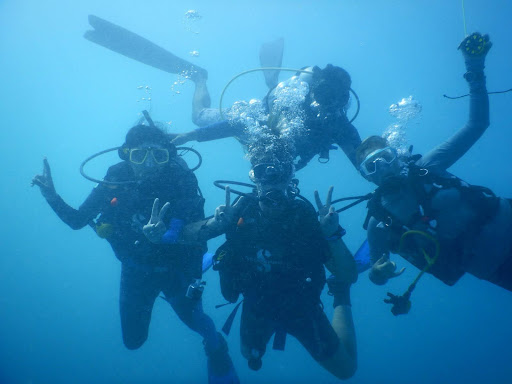Nitrogen Scuba Diving: Understanding the Basics and Safety Considerations
Scuba diving is an exhilarating sport that opens up the underwater world to exploration. As divers descend into the depths, the environment they encounter is vastly different from the surface, with changes in pressure, temperature, and gas concentrations. One of the primary gases involved in scuba diving is nitrogen. Nitrogen scuba diving refers to the process of using compressed air, which contains about 78% nitrogen, during a dive. While nitrogen is harmless at surface levels, its effects on the human body can become significant at depth. Understanding nitrogen scuba diving and its potential risks is crucial for ensuring safe and enjoyable diving experiences.
The Role of Nitrogen in Scuba Diving
When a diver descends below the surface, the pressure around them increases. As the pressure increases, so does the concentration of gases that are dissolved in the bloodstream. In the case of nitrogen scuba diving, the nitrogen in the air begins to dissolve into the body’s tissues at a rate directly proportional to the depth of the dive. At greater depths, more nitrogen is absorbed by the body, and this can lead to potential risks if the dive is too deep or too prolonged.
Under normal conditions at sea level, nitrogen is inert and does not interact with the body in any noticeable way. However, when the body absorbs too much nitrogen due to prolonged or deep dives, it can lead to a condition known as nitrogen narcosis, and even more seriously, decompression sickness, also referred to as “the bends.”
Nitrogen Narcosis
Nitrogen narcosis is a phenomenon that occurs during nitrogen scuba diving at depths typically greater than 30 meters (100 feet). At these depths, nitrogen has a narcotic effect on the brain, causing a sensation similar to intoxication. Symptoms of nitrogen narcosis may include confusion, impaired judgment, euphoria, and a general sense of disorientation. While nitrogen narcosis itself is not usually fatal, it can increase the risk of accidents underwater. Divers may make poor decisions due to the altered mental state, such as swimming too deep or ascending too quickly, both of which can lead to dangerous situations.
Fortunately, nitrogen narcosis is reversible. If a diver ascends to a shallower depth, the symptoms typically subside. However, the deeper the dive, the more pronounced the effect, which is why it is recommended to avoid dives beyond 40 meters (130 feet) unless a diver is properly trained and equipped.
Decompression Sickness and Nitrogen Scuba Diving
Decompression sickness, or DCS, is another significant risk associated with nitrogen scuba diving. This condition occurs when a diver ascends too quickly after being exposed to high-pressure conditions. As a diver spends more time at depth, their body absorbs more nitrogen. If the ascent is too rapid, the nitrogen that has dissolved into the tissues does not have enough time to safely leave the body, forming bubbles in the bloodstream and tissues.
These bubbles can cause joint pain, dizziness, difficulty breathing, and, in severe cases, paralysis or death. To minimize the risk of decompression sickness, divers are trained to follow controlled ascent rates and make safety stops during the return to the surface. Dive computers and dive tables are used to track nitrogen absorption levels and help divers plan their dives in a way that minimizes the risk of decompression sickness.
The Importance of Proper Training
Because nitrogen scuba diving comes with inherent risks, proper training is essential. Divers are taught how to manage nitrogen exposure through techniques such as limiting dive depths and times, performing controlled ascents, and incorporating safety stops. Furthermore, divers are educated on how to recognize the signs and symptoms of nitrogen narcosis and decompression sickness, so they can take immediate action if necessary.
For advanced divers, technical diving training may be required for deeper dives. This training includes specialized gas mixtures such as trimix or heliox, which reduce the amount of nitrogen and oxygen breathed during the dive, thereby mitigating some of the risks associated with nitrogen scuba diving.
Managing Nitrogen Load with Dive Tables and Computers
One of the most effective ways to reduce the risks of nitrogen-related issues is through careful planning of each dive. Dive tables and dive computers are indispensable tools for divers in managing their nitrogen load. These tools provide detailed calculations based on depth, time, and other factors to help divers understand how much nitrogen they are absorbing.
Dive tables provide a clear and simple method for estimating safe dive profiles. They offer a set of guidelines that tell divers how long they can stay at a given depth before reaching a limit of safe nitrogen absorption. Dive computers, on the other hand, are electronic devices that continuously monitor a diver’s depth and time, adjusting nitrogen exposure calculations in real-time. These devices also alert the diver if they are approaching unsafe limits, ensuring that the dive remains within safe parameters.
Nitrogen and Dive Planning
Effective dive planning is one of the most important aspects of minimizing nitrogen-related risks. Divers must carefully consider factors such as depth, time, the water temperature, and any previous dives they have completed within a 24-hour period. This ensures that the diver’s body does not exceed its nitrogen absorption limits and allows for appropriate decompression time if needed.
Dive planning should also include a thorough understanding of nitrogen scuba diving risks, the importance of hydration, and the need to avoid alcohol consumption before diving. Hydration helps the body off-gas nitrogen more efficiently, while alcohol can exacerbate dehydration, increasing the risk of decompression sickness.
The Future of Nitrogen Scuba Diving
As technology and dive equipment continue to evolve, the future of nitrogen scuba diving looks promising. New materials and innovations are making scuba diving more accessible and safer than ever. Additionally, ongoing research into gas mixtures, dive algorithms, and decompression models holds the potential to improve our understanding of nitrogen’s effects on the body and further minimize the risks associated with nitrogen scuba diving.
Advances in dive computers, for example, are already allowing divers to track their nitrogen levels with unprecedented precision. These devices are becoming more intuitive and user-friendly, giving divers more control over their dives and improving safety.
Conclusion
Nitrogen scuba diving is an essential component of modern recreational and professional diving, but it comes with certain risks that must be carefully managed. Understanding the effects of nitrogen, including nitrogen narcosis and decompression sickness, is critical for every diver. Proper training, dive planning, and the use of dive tables and computers are vital in minimizing these risks and ensuring a safe diving experience. By respecting the limits of nitrogen exposure and adhering to established safety protocols, divers can enjoy the incredible world beneath the waves with confidence and safety.
In summary, nitrogen scuba diving requires attention to detail, awareness of potential risks, and adherence to safe practices. Divers who are well-prepared can minimize risks and maximize enjoyment, exploring the underwater world with greater confidence and safety.







